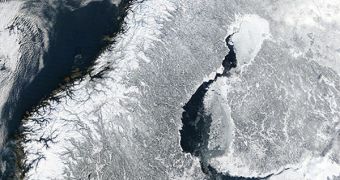In an attempt to make more sense about how the planet's climate looked like thousands of years ago, during the time between the last two glaciation events that affected Earth. British researchers just got a new grant to fund their investigation.
The money came from the Natural Environment Research Council (NERC) of the United Kingdom, which decided to give about £3.3 million for this study. That's the equivalent of $5.24 million.
Scientists with the University of Bristol are conducting the research effort, which includes a larger number of universities and research centers in the country. The university gained the lead in this effort to serious efforts on its part.
Scientist Dr Mark Siddall, who holds an appointment as a RCUK research fellow in the School of Earth Sciences at the university, was the one who initiated and coordinated the PALSEA (PALeo-constraints on SEA-level rise) working group.
The efforts the group set forth ensured that the University of Bristol would lead the national collaboration, which includes the universities of Oxford, Southampton, Plymouth, Liverpool and Durham.
PALSEA does not at on the national and local levels alone, but also internationally, by organizing workshops to coordinate the efforts of research groups worldwide, that are conducting investigations on how seas looked like in Earth's past.
Determining how ice sheets and sea levels changed over the past millennia is very important for helping climate researchers make more sense of the data they are currently collecting.
Satellites, direct measurements, computer models and theoretical predictions are producing results that baffle scientists at times, and they hope to reduce the incidence of such cases by studying what happened in the past.
“The global distribution of sea level is complex but understanding the extent and distribution is fundamental to allow human adaptations,” Dr Siddall explains.
“Local sea-level records from the past can help ‘fingerprint’ which ice sheets contributed to individual episodes of sea-level rise in the past using isostatic models, which help us to understand the distribution of future sea-level rise,” he adds.

 14 DAY TRIAL //
14 DAY TRIAL //